Revolutionizing strike warfare, the Joint Direct Attack Munition, or JDAM, is a game-changing innovation. This guidance kit transforms an unguided bomb into one of the most capable and cost-effective air-to-surface weapons, elevating air power flexibility and optimizing the potential to concentrate firepower precisely when and where needed. Additionally, the JDAM system boasts high reliability, allowing it to be deployed up to 15 miles away from the intended target.
The precision-guided munition known as JDAM (Joint Direct Attack Munition) finds application within diverse global military forces. Playing a central role, The Boeing Company undertakes the mantle of the principal contractor, overseeing the intricate production process of this exceptionally potent weaponry. Boeing effectively spearheads a committed coalition for development and production, collaborating with renowned entities including Honeywell, Inc., Rockwell Collins, HR Textron, Lockheed Martin Tactical Defense Systems, Lockley, Enser, and Eagle-Picher, in addition to Stremel.
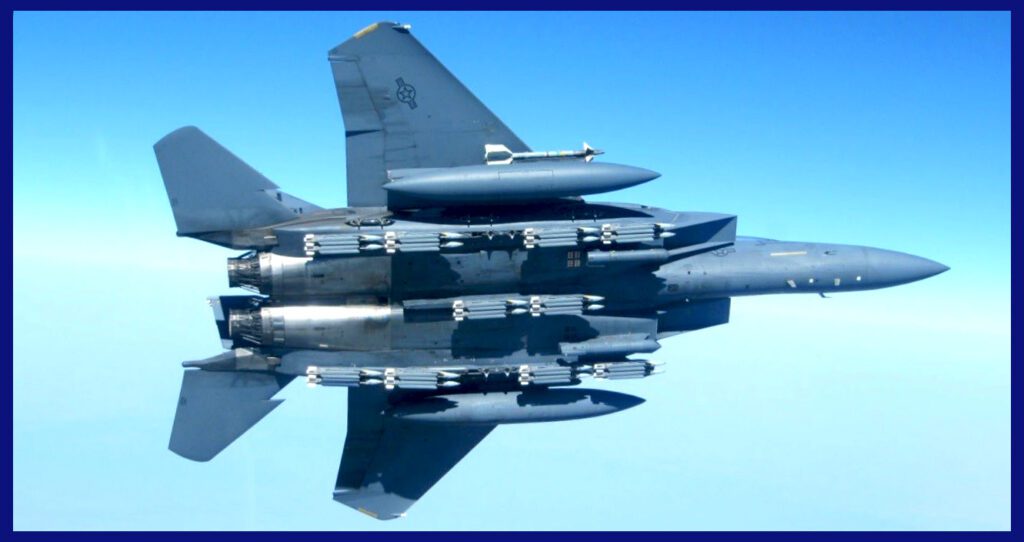
The JDAM is a “bolt-on” guidance module that transforms unguided gravity bombs into precision-guided munitions ( PGMs ) rather than being a standalone weapon. A (body) strake kit, a combined inertial guidance system and GPS guidance control unit, and a tail section with aerodynamic control surfaces make up the system’s essential parts.
The JDAM was designed to enhance existing laser-guided bomb and imaging infrared technologies, which can be hampered by unfavourable ground and weather conditions. Certain JDAMs, referred to as Laser JDAMs, now have laser seekers installed as well. Since its inception from 1998 to 2020, more than 4,30000 kits have been produced.
Combat-Proven Near-Precision Accuracy of JDAM
The combat-proven near-precision accuracy of JDAM is pivotal in expeditiously attaining wartime objectives, effectively neutralizing targets with optimized utilization of weaponry resources. This strategic employment necessitates a reduced quantity of munitions in comparison to unguided bombs, enabling the achievement of mission goals with a decreased number of sorties and subsequently mitigating aircraft attrition risks. The ongoing enhancement of JDAM accuracy can be attributed to continuous improvements in both hardware and software components. In its most recent configuration, JDAM showcases remarkable precision, boasting a Circular Error Probable (CEP) of fewer than 2.5 meters. Impressively, even within environments where GPS signals are compromised, JDAM exhibits exceptional accuracy, achieving a CEP of fewer than 7 meters.
JDAM is being integrated into virtually every U.S. combat aircraft and several international fighters. JDAM’s performance has been proven by an extensive test program and operational usage of more than 14,000 weapons in Operation Allied Force, Operation Southern Watch, Operation Enduring Freedom and Operation Iraqi Freedom. This extensive usage has demonstrated the weapon’s accuracy from a wide variety of aircraft during single and multiple launches from on-axis and off-axis aircraft positions against both vertical and horizontal targets.
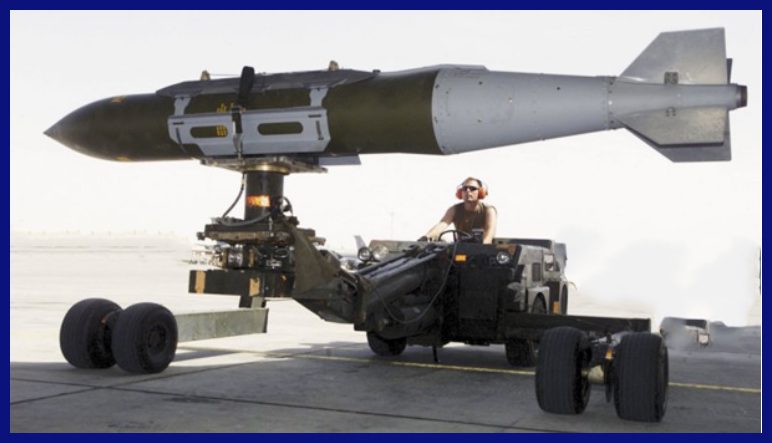
The Remarkable Advantages of JDAM
Adverse Weather Capability: Even in severe weather conditions, JDAM provides the ability to hit high-value targets at the place and time needed. Because JDAM was specifically designed to operate in adverse weather conditions, its employment is limited only by the launch aircraft’s capability to operate in adverse weather. The GPS receiver performs satellite tracking even when heavy cloud cover obscures the target view.
After Launch Autonomy: JDAM is truly a launch-and-leave weapon, it requires no pilot/operator interaction following aircraft release. This feature allowed the delivery aircrew to leave the strike area and concentrate on its total mission success. When the impact occurs, the launch aircraft can be appreciably distant from the target area and return to base, or engage another target. It can attack multiple targets due to autonomous operations.
Affordable: JDAM is one of the most affordable weapon systems in the world. With a large production base created by the U.S. Air Force, Navy and Marine Corps, JDAM manufacturing, testing and support hardware will be in place for at least the next 30 years. JDAM’s affordability is further enhanced through lower operational costs. Due to its precision, fewer weapons are expanded per target, requiring fewer sorties and exposure to threats.
Designed for a 20-year life with no required maintenance or calibrations, JDAM saves the armed forces millions of dollars over the life of the weapon compared to similar weapons in today’s inventory that require periodic maintenance. Built-in tests ( BIT ) and software upgrades can be accomplished quickly and easily at the operational level as the weapon is deployed.
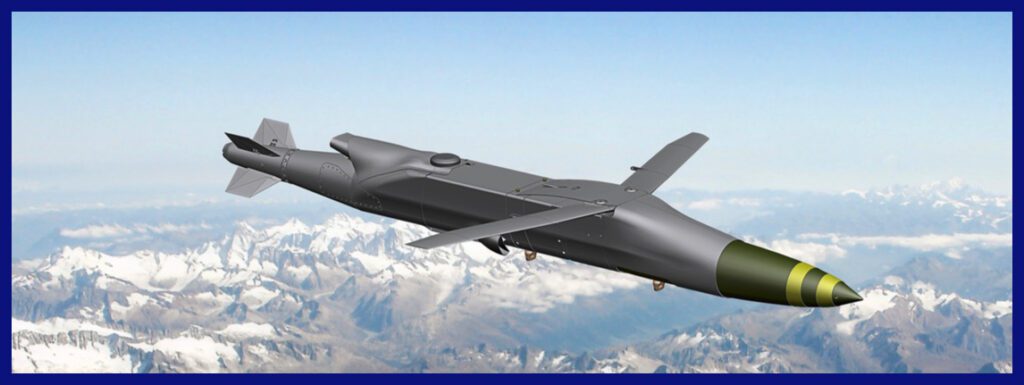
JDAM Concept Of Operations
Mission Planning: JDAM mission planning modules provide the planner with the capability to designate targets, identify launch and release points for one or more JDAM define impact parameters and determine weapon effectiveness to confirm desired mission objectives. Once the JDAM missions have been planned, the aircraft mission-planning system places the information on the Data Transfer Cartridge for aircraft download to the weapons. The JDAM mission-planning timeline has been repeatedly demonstrated to be less than 10 minutes. Planning time may be longer or shorter, depending on the experience of the planner, the complexity of the mission and optional activities performed during the planning process.
In-Flight Carriage Initialization: JDAM automatically begins its initialization process during captive carry, when power is applied by the aircraft. The weapon performs a built-in test, receives GPS and targeting information from the aircraft and begins alignment of its inertial measurement unit with that of the aircraft after 2.5 minutes of warm-up. Total initialisation time takes approximately five minutes, including warm-up and transfer alignment.
Targetting data is then automatically downloaded to the weapon from the data transfer cartridge as mechanized for that particular aircraft. The transfer alignment process involves the transfer of information from the aircraft inertial navigation system to the weapon inertial measurement unit. It is accomplished by comparing the output of the two inertial systems during ingress to the weapon release area.
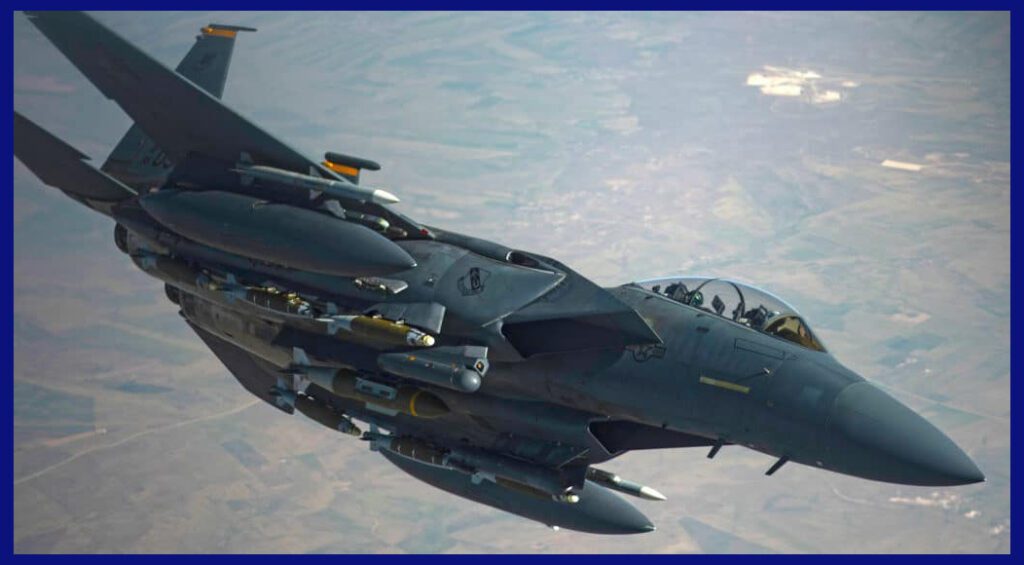
Carriage Envelop: JDAM can be captive-carried from low Mach to supersonic Mach 1.4 speeds from sea level to a high altitude of 50,000 ft placing minimal restrictions on the execution of aircraft missions.
Target Selections: Each JDAM can be independently targeted, allowing multiple targets on a single sortie or multiple impact points for a single target complex. Target coordinates can be provided by preplanned mission data from the delivery aircraft, by onboard aircraft sensors during captive carry or from off-board via a third-party or manual aircrew input. In addition to pre-programmed targeting, the weapon is capable of in-flight captive-carriage retargeting.
JDAM stores a total of eight complete missions. These missions can be any combination of preplanned missions or targets of opportunity. During carriage, the aircrew can select which of the eight missions the weapon is to execute. Target parameters for both preplanned targets and targets of opportunity may be edited by the aircrew.
Weapon Release And Jettison Envelopes: JDAM can be released from low Mach to supersonic Mach of 1.4 speeds from sea level to a high altitude of 50,000 feet, placing minimal restrictions on the execution of aircraft missions. The jettison envelope is similar to the release envelope, except that the weapon may be jettisoned at lower speeds than allowed for a guided release.

Launch Acceptability Region: Aircraft cues will indicate when the weapon is within the Launch Acceptable Region ( LAR ). The LAR depicts the area from which the weapon can be released and reach its target with the planned impact parameters. Typically, the aircraft’s preplanned route will indicate the preplanned release point for the weapon. However, a LAR 6-Degree Of Freedom tool has been provided to the aircraft design authority. This enables the host aircraft to develop algorithms to compute if the weapon is within the LAR, based on real-time aircraft conditions. When the aircraft is within the LAR, the weapon can be released at the aircrew’s discretion.
Pre-release Maneuvers: The aircraft needs to perform a transfer alignment manoeuvre only if the alignment quality indication provided by the weapon to the host aircraft indicates a need to do so. The specification requirement is that a 30-degree heading change will align JDAM within three minutes. However, operational experience for JDAM is that normal en-route fighter aircraft manoeuvres are sufficient to maintain the alignment of JDAM and no special manoeuvres are required.

Weapon Release Sequence: When the weapon release is initiated, the aircraft automatically verifies whether the weapon possesses the required target information, a proper transfer alignment, the absence of critical BIT failures, and sufficient weapon battery power. Following separation, the fins remain locked to ensure a safe detachment from the aircraft. Subsequently, the fins are unlocked, and the separation autopilot is engaged.
Adaptive Optimal Guidance: Following safe separation, the weapon autopilot uses an adaptive optimal guidance law to continuously re-optimise the trajectory based on current conditions. By continuously recomputing the trajectory, as opposed to trying to follow the initial trajectory, the weapon’s energy is more efficiently used to maximise its footprint. This allows for precise control of impact azimuth and angle, allowing off-axis attack of vertical and horizontal targets for increased aircraft survivability. Guidance is accomplished through the tight coupling of a Global Positioning System with a three-axis Inertial Navigation System.
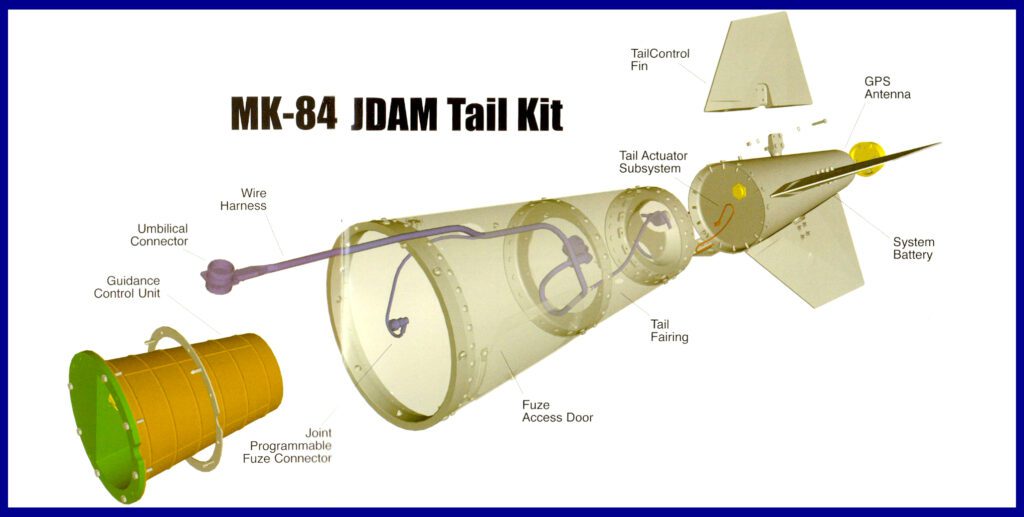
Terminal Attack: JDAM’s robust guidance algorithm, designed to control impact angle and azimuth, provided off-axis target attack capability and flexible aircraft flight-profile delivery capability. The guidance algorithm was designed to give the highest priority to hitting the target at the specified impact angle and azimuth while maximising impact velocity. This feature allows JDAM to achieve optimum impact angles velocities and axes of attack against a wide array of targets, without extensive aircraft manoeuvres.
Latest Generation JDAM Variants
Small Diameter Bomb (SDB) GBU-39/B Weapon: A low-cost, precision weapon system that provides a four-fold increase in sortie effectiveness.
The SDB system includes 2 types
- • GBU-39/B weapon
• BRU-61/A four-weapon smart pneumatic carriage - • Mission planning system
• Logistics support system
The SDB combines an effective, right-sized, penetrating and blast-fragmentation warhead and near-precision navigation/guidance to produce low collateral damage while achieving excellent effectiveness. SDB is effective against a wide variety of stationary targets including Command, Control, and Communications (C3) bunkers, air defence assets, airfields, Petroleum, Oil and Lubricant (POL) sites, missiles, and artillery.
The SDB provides the ability for day/night attacks of fixed and stationary targets in adverse environmental and weather conditions. SDB has been fully integrated into the F-15 Strike Eagle. The system also is on nearly all delivery platforms including internal carriages in the F-16 Fighting Falcon, F/A-18 Hornet, F/A-22 Raptor, F-35 Lightening II, MQ 9 Reaper and all Bombers. Boeing’s SDB system exceeds the war fighter’s stated needs for a wide variety of targets at a very affordable cost. SDB delivery began in April 2005 after one of the most successful development and test programs on record.
The carriage with four SDBs can replace a single 1,000- or 2,000-lb weapon, quadrupling the number of targets serviced for a single aircraft sortie. The stand-off range provided by SDB’s wings provides employment flexibility and reduces aircraft exposure to threats.
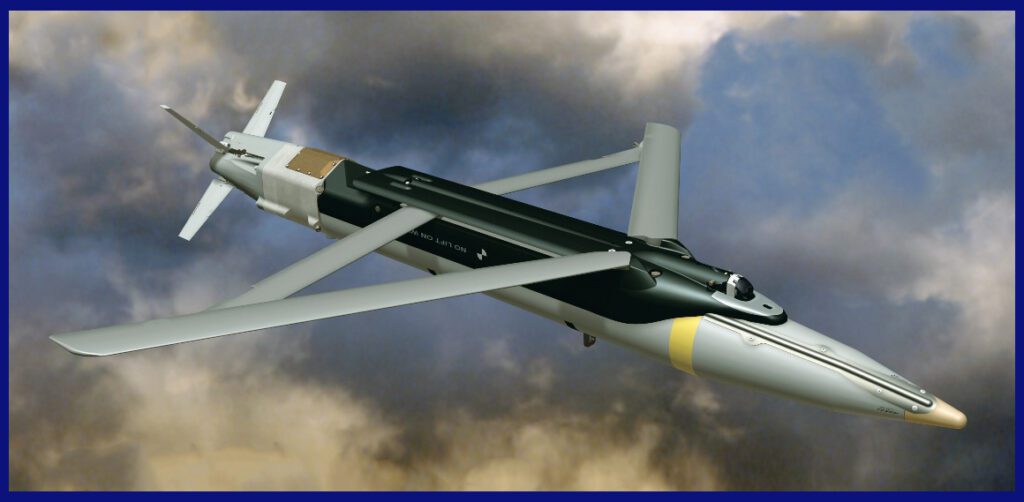
GBU-39/B Weapon Specifications
- Weight: 268 lb ( 122 kg )
- Length: 70.8 in. ( 1.8 meters )
- Width: 7.5 in ( 19 cm )
BRU-61/A Carriage Weapon Specifications
- Carriage Weight: 325 lb (147 kg)
Weight with weapons: 1,397 lb (634 kg) - Length: 143 in. (3.6 meters)
Width: 16 in. (40.6 cm)
Height: 16 in. (40.6 cm)
Advantages of Laser JDAM
- Laser JDAM is combat proven and flexible
- Prosecute moving, relocatable or maritime targets
- Deliver precision weapon effects
- Employ during day or night operations
- Select targeting and weapons effects in the cockpit
• Be easily integrated and installed

Laser JDAMs have demonstrated remarkable accuracy against moving targets due to the continuous updating of impact coordinates during flight. Functioning similarly to a conventional JDAM, these munitions can glide up to 15 miles toward the target, utilizing updates from Global Positioning System (GPS) satellites. During the terminal flight, the weapon autonomously navigates to the target’s coordinates, employing laser energy to refine and adjust these coordinates, resulting in a precise impact—regardless of whether the target is manoeuvring at highway speeds.
The integration of the laser sensor into JDAM offers an affordable, field-installable solution that presents minimal risk, as it necessitates no modifications to the aircraft’s software. Moreover, this integration can seamlessly accompany other upgrades, including the Extended Range (JDAM ER) wing set, which has the capability to triple JDAM’s range to exceed 40 miles.
GBU-54 Weapon Specifications
- Weapon Weight: USAF _ 575 lb, USN _ 591 lb
- Length: 93.7 in.
Diameter: 17 in
GBU-56 Weapon Specifications
- Weapon Weight: USAF _ 2,120 lb, USN _ 2,135 lb
- Length: 151.7 in.
Diameter: 25.3 in
Furthermore, seize this exclusive opportunity to acquire the exquisite large-scale 1/72 premium die-cast models of the formidable Lockheed F-35A Lightning II. These remarkable and iconic stealth military jets, armed with JDAM internally, boast an impeccable track record and are now available for purchase on AirModels with worldwide delivery. Click here now to secure your piece before the limited stock is depleted.

In conclusion, the Joint Direct Attack Munition (JDAM) stands as a game-changing advancement in modern military technology. By ingeniously utilizing its tail kit, JDAM transforms unguided bombs into highly accurate precision-guided weapons, reshaping aerial combat dynamics. This cost-effective solution effectively strikes targets with the combined precision of GPS guidance and the reliability of an Inertial Navigation System (INS).
Its modular design facilitates integration with various bomb sizes, enhancing its value to military arsenals. Beyond its technical excellence, JDAM minimizes collateral damage through improved target differentiation, crucial in an era prioritizing civilian safety. This capacity for precise, strategic strikes underscores JDAM’s significance, exemplifying the fusion of technology and operational practicality, revolutionizing precision bombing and bolstering military efficacy.

Important Announcement for Our Valued Readers!
After an article is published, it is possible that updates or changes may have occurred beyond the time of publication. Therefore, it is important to be aware that certain information in the article might be outdated. To ensure the most accurate analysis, it is highly recommended to verify the content with the latest sources available.
However, we are dedicated to delivering outstanding articles on military products and global updates. Maintaining quality and smooth operation requires resources. Your support sustains our efforts in providing insightful content. By purchasing high-quality products through our affiliated links, you help us keep our platform alive and acquire top-notch items. Your unwavering support is invaluable and inspires us to strive further.
We welcome your suggestions and requests for more information, as we value feedback from our readers. If there’s specific defence material or equipment not covered on our site, please share your request in the comments. We’ll strive to research and provide the required information. We sincerely thank you for your unwavering interest in our website, and we eagerly anticipate hearing from you! Enjoy your reading experience!
